 "RamblinRover Luxury-Yacht" (ramblininexile)
"RamblinRover Luxury-Yacht" (ramblininexile)
11/24/2014 at 17:21 • Filed to: None
 1
1
 24
24
 "RamblinRover Luxury-Yacht" (ramblininexile)
"RamblinRover Luxury-Yacht" (ramblininexile)
11/24/2014 at 17:21 • Filed to: None |  1 1
|  24 24 |
We've had some good dialogues on unclear topics before, including what makes for a shooting brake, so I thought I'd pose the question: what makes for the dividing line between front and front-mid engined in a car? Should the definition make for the entire engine behind the front axle line, engine sans accessory/pulleys, or engine block/cylinders?
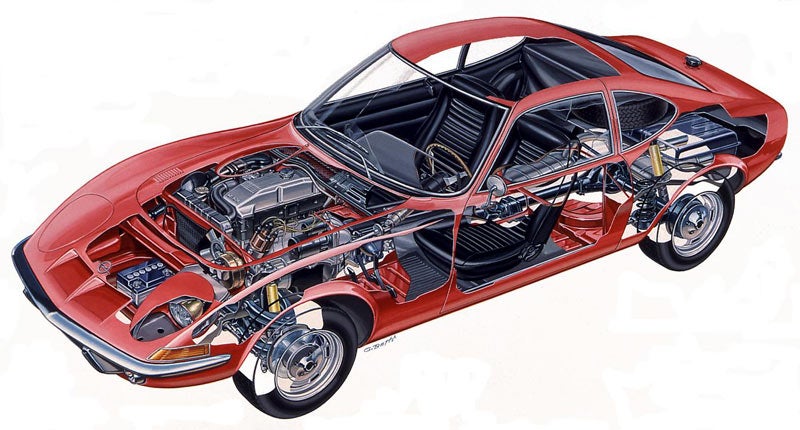
Some cases aren't even close, but a lot are marginal, so we as Oppos should see if we have consensus. Also, if you feel FMR is a bullshit designation, you can say that too.
 Jayhawk Jake
> RamblinRover Luxury-Yacht
Jayhawk Jake
> RamblinRover Luxury-Yacht
11/24/2014 at 17:24 |
|
If the engine and its accessories center of gravity is aft of the front axel line, it's mid engine
 LappingLuke
> RamblinRover Luxury-Yacht
LappingLuke
> RamblinRover Luxury-Yacht
11/24/2014 at 17:28 |
|
FMR is no more bullshit than "regular" MR. "Regular" MR designation is an engine that is mounted in front of the rear axle but when is it ever truly IN THE MIDDLE? Like never ever? So if an engine is mounted behind the front wheels entirely, but not IN THE MIDDLE, how is that less mid mounted than "regularly" mid mounted? People just like to argue semantics to the point of stupidity.
 MR2_FTW - Group J's resident Stig
> RamblinRover Luxury-Yacht
MR2_FTW - Group J's resident Stig
> RamblinRover Luxury-Yacht
11/24/2014 at 17:34 |
|
For most people, for a front engined car to be "front mid" the front spark plug(s) need to be behind the front axle line. See: RX-7, S2000, Z06 Corvette ( I think)
 RamblinRover Luxury-Yacht
> Jayhawk Jake
RamblinRover Luxury-Yacht
> Jayhawk Jake
11/24/2014 at 17:38 |
|
Seems cogent. That lets in a much larger number of cars than people like to include with the definition in regular practice, but considering that those are very often people trying to degrade the number of cars in the class...
I've noticed that the effort by owners of RMR cars to insist they have something truly special often takes the form of claiming that FMR is BS, but the insistence that an engine must be in every possible way behind the front axle line may be a lesser form of that. They could and should lighten up - 50/50 distribution or close unto is 50/50 regardless whether the engine is behind the seats.
 RamblinRover Luxury-Yacht
> MR2_FTW - Group J's resident Stig
RamblinRover Luxury-Yacht
> MR2_FTW - Group J's resident Stig
11/24/2014 at 17:40 |
|
That's a perfectly valid answer as well. It defines FMR as being a very distinctly middle-of-the-car biased position without getting dragged down in accessory, timing, and other quibbles. It also neatly excludes most things of a muscle car-ey nature that might pass the CG of engine test but still end up with a 60%+ forward weight bias.
 Jayhawk Jake
> RamblinRover Luxury-Yacht
Jayhawk Jake
> RamblinRover Luxury-Yacht
11/24/2014 at 17:41 |
|
The last line is the biggest takeaway - doesn't matter where things are, 50/50 is 50/50
 RamblinRover Luxury-Yacht
> Jayhawk Jake
RamblinRover Luxury-Yacht
> Jayhawk Jake
11/24/2014 at 17:46 |
|
I have very deliberately modified my project to have an engine c.g. about 7-8" further back than stock. I found myself musing the other day as to whether it counted as FMR, but there are enough quibbles I thought I'd put it up to a vote. FWIW, the front axle line passes through the very front of the timing cover.
My Land-Rover is more unquestionably FM4, as the center line of the fan is right over the axle centerline.
 LappingLuke
> Jayhawk Jake
LappingLuke
> Jayhawk Jake
11/24/2014 at 17:48 |
|
That's not really true. Pretend the engine (the heaviest "single component") is mounted at the dead geometric center of the car and the weight distribution is 50/50. This case has a much lower polar moment of inertia than a car that is 50/50 front to rear but has the engine mounted in the front (Audi style) or rear (911 style) if all 3 cars we are talking about weigh the same. A car with lower polar moment of inertia will change direction and rotate more easily through turns than one with higher. Changing direction and rotating easily is important for going fast like Ricky Bobby.
 RamblinRover Luxury-Yacht
> LappingLuke
RamblinRover Luxury-Yacht
> LappingLuke
11/24/2014 at 17:49 |
|

The Previa is probably the most mass-market vehicle we'll ever see with this close to a "true" mid.
RMR snobs, though. They're out there, man.
 StingrayJake
> RamblinRover Luxury-Yacht
StingrayJake
> RamblinRover Luxury-Yacht
11/24/2014 at 17:51 |
|
FMR = Engine behind front axle, ahead of cockpit, rear-wheel drive
RMR = Engine behind cockpit, ahead of rear axle, rear-wheel drive
Mid-engine = A somewhat antiquated term that no long effectively describes a car's layout
 LappingLuke
> RamblinRover Luxury-Yacht
LappingLuke
> RamblinRover Luxury-Yacht
11/24/2014 at 17:51 |
|
WEEEEIRRRRRRRD!!! Get it away! LOL

 GhostZ
> RamblinRover Luxury-Yacht
GhostZ
> RamblinRover Luxury-Yacht
11/24/2014 at 17:52 |
|
The big distinction between FMR and RMR? Driveshaft length. Rear-mid-engines have the transmission and rear wheels attached directly to eachother, without a significant amount of rotating weight attached to the engine, creating friction. RMR and FR cars do have that.
Moreover, weight transfer characteristics are different for FMR and RMR. There are advantages to each (Stability and cooling in FMR, low drivetrain friction and compact design in RMR).
Then there's second polar moment to consider. If an RMR engine is further from the center of weight than an FMR is, then the rotating arm of the car's weight is worse in the RMR engine, or vice versa. Worse yet, if the car has a transaxle transmission with an FMR configuration, both the engine AND the transmission are likely further away from the center point. The closer-to-50/50 weight distribution would make up for that difference, but if you can hit 50/50 without a transaxle, it's not always worth it to move weight away from the center of the car.
Personally, I think the problem is that people embellish "Mid engined" as some holy grail of car manufacturing, but weight distribution, polar moment, drivetrain friction, etc. are all of the important things. Any advantage of a mid engined car can be diminished or removed entirely if those characteristics are worse.
 RamblinRover Luxury-Yacht
> StingrayJake
RamblinRover Luxury-Yacht
> StingrayJake
11/24/2014 at 17:56 |
|
Mid-engine = a term come up with by snobs as an excuse for why their car had no usable rear space - a consequence of designers trying to un-VW the traditions of a rear mounted engine and obtain balance. A term that was "Ruined Forever" when it was noticed that designers of cars with engine compartments in front had been giving an eye to this concern for eons, and furthermore gave the user trunk space. "But that's cheating! It's not really mid-engine like *I mean* mid-engine!" they were heard to grumble.
Then they got back in their X1/9s and went off to die in an Italian cataclysm of rust.
 You can tell a Finn but you can't tell him much
> RamblinRover Luxury-Yacht
You can tell a Finn but you can't tell him much
> RamblinRover Luxury-Yacht
11/24/2014 at 18:01 |
|
IMO if the engine is on front of the cabin it is front engined. Mid engined cars have their engines behind the cockpit. Front Mid is just verbal masturbation for people who can't accept that front engined cars can be awesome too.
 RamblinRover Luxury-Yacht
> GhostZ
RamblinRover Luxury-Yacht
> GhostZ
11/24/2014 at 18:05 |
|
A very good post. One that didn't address the question asked (what makes FR vs. FMR), but I like it anyway. I think you mean power loss re: rotating mass, because friction isn't really correct (dynamic resistance), but I get what you meant. The best thing here is that you're articulating what makes the RMR aficionados flip out when FMR is described as mid - they know, they *feel* that it's essentially different, but they can't describe that difference and resort to endless tape measure games. They often don't get how much is *not* weight balance, but drivetrain feel.
It should be noted, of course, that weight transfer characteristics trend toward one another from both ends - the mid-ier the front position, the closer it resembles an (often high-mounted) rear mid in axle weight shift under braking or accel.
 RamblinRover Luxury-Yacht
> You can tell a Finn but you can't tell him much
RamblinRover Luxury-Yacht
> You can tell a Finn but you can't tell him much
11/24/2014 at 18:20 |
|
There's an element of truth, but "front mid" I think became accepted because people started to realize the prevailing definition of "mid" was largely nonsensical.
Take the Melkus RS1000, just as an example. Very much a mid-engined car by the classic definition, but the engine is no more truly in the middle of the car than the Opel GT above. In the case of several Matras, with the engine directly on top of the rear axle, the engine is even less so in the middle.
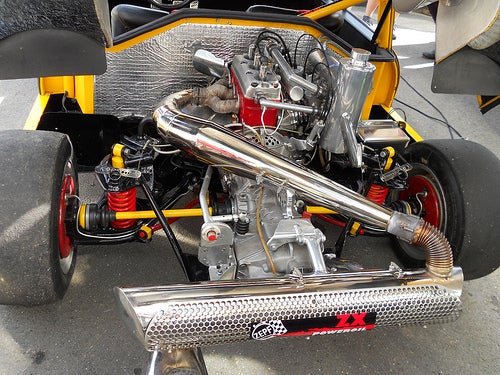
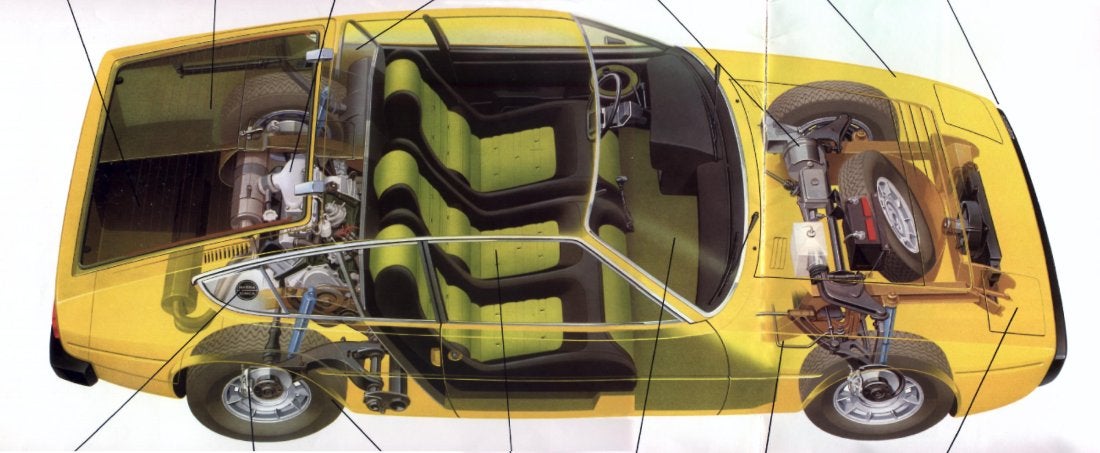
There may also have been an element of resistance from those who had been designing a rear-ward bias of engine position for decades and were incensed not to receive credit for doing so. Maybe some of the first popular use came from the Corvette design team?
You're absolutely right that the classic use of "mid-engined" is as you describe, forward of the rear axle, behind the passenger compartment. That doesn't mean that it was any less verbal masturbation in *its* day.
Also, there is very arguably good reason to break down cars with front engines into those with a more distributed weight and mannerly weight shift under braking and those without... generally. It's only as muddy a distinction in that case as some of the RMRs.
I'd also point out that two vehicles with engines truly in the middle wouldn't count under your definition, the Zundapp Janus and the Toyota Previa:
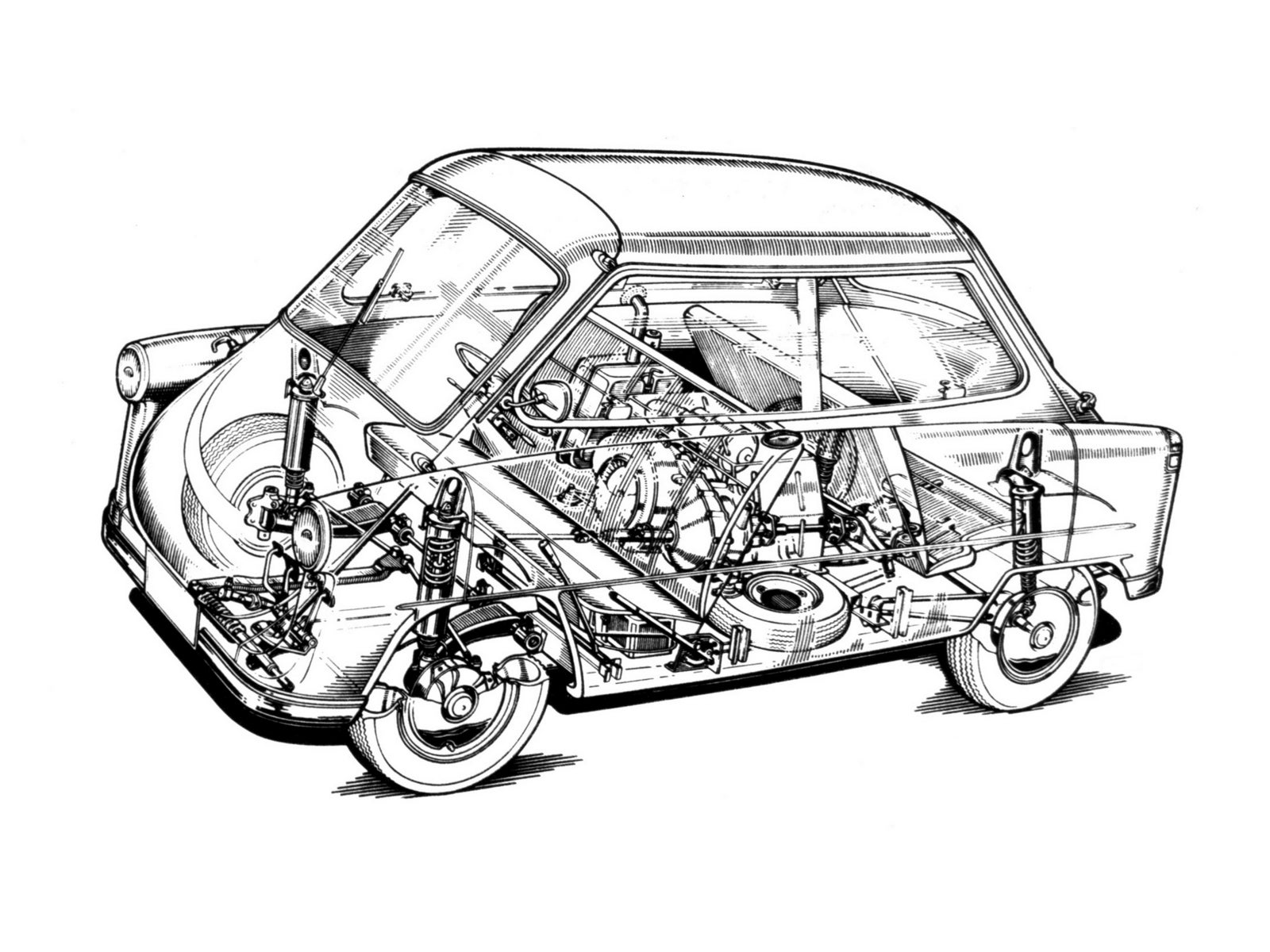

The preceding points are among those that make me hold that the original popular use of "mid-engine" was deceptive and ill-advised in a general sense by being limited.
 hike
> RamblinRover Luxury-Yacht
hike
> RamblinRover Luxury-Yacht
11/24/2014 at 18:38 |
|
I'd never seen a Previa chassis without the body. This is awesome.
 McMike
> RamblinRover Luxury-Yacht
McMike
> RamblinRover Luxury-Yacht
11/24/2014 at 22:24 |
|
To me, there are three different layouts:
Front
Mid
Rear
I believe a Front/mid engine is better for balance, but I refuse to call it "Mid." It will always be "front" to me. "Front/Mid" to be specific.
 Ramblin Rover - The Vivisector of Solihull
> McMike
Ramblin Rover - The Vivisector of Solihull
> McMike
11/24/2014 at 23:16 |
|
I think we can blame this on the early and idiosyncratic cornering of the market of the word "mid" by the rear mid crowd to sell it as something really special. It's not any more "mid" except by convention and tradition. There is one point on which it has a leg up on front/mid classification-wise, though: There's more tendency to pick a side of the rear axle just because you've got to drive it. You don't see it as clearly with front engines because the engine can be wherever-the-fuck unless it's a weird setup and/or fwd like the Toronado.
Which raises the interesting question of whether a Toronado swapped Fiero is mid, with the engine right exactly over the wheels.
Anyway, the main question of the post is what the cutoff for front/mid opposed to"ordinary" front is. We've had engine cg behind axle line and foremost sparkplug behind posed as definitions so far, but there's also the "whole engine" possibility- whatever that would mean. Accessories? Timing cover?
 JACU - I've got bonifides.
> RamblinRover Luxury-Yacht
JACU - I've got bonifides.
> RamblinRover Luxury-Yacht
11/25/2014 at 00:56 |
|
It's really very simple. If there's more this than that, then it's this. If there's more that than this, then it's that. If there's neither this nor that, then it's something else entirely.
I loves me some Opel GTs.
 gmporschenut also a fan of hondas
> RamblinRover Luxury-Yacht
gmporschenut also a fan of hondas
> RamblinRover Luxury-Yacht
11/25/2014 at 01:55 |
|
Mid engine. Loads of trunk space. Long live the 914!
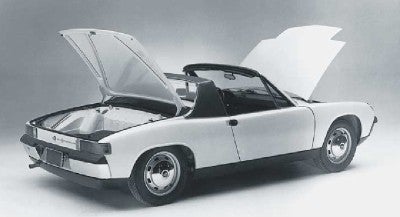
All FMR are mid engine. Not all mid engine cars are FMR.
 BiTurbo228 - Dr Frankenstein of Spitfires
> LappingLuke
BiTurbo228 - Dr Frankenstein of Spitfires
> LappingLuke
11/25/2014 at 06:00 |
|
It's this little question that I'm wondering about my Spitfire. Basically, I'm restoring a Triumph Spitfire and swapping out the 1.3l 4-cylinder for a 2.5l Triumph inline 6. This necessitates a lot of work to redistribute the weight/lighten things to get the weight distribution back to an acceptable figure.
One of the options I've got for redistribution weight is to use a GT6 fuel tank (which is at the back of the boot, rather than sitting on top of the rear axle, about a foot or so back in the body). The question is, what will result in the better handling compromise? Having more weight further back in the chassis but a higher polar moment of inertia, or having a worse weight distribution but a lower polar moment of inertia. Oh, and the GT6 tank is mounted lower down in the chassis by 10" or so.
 BiTurbo228 - Dr Frankenstein of Spitfires
> RamblinRover Luxury-Yacht
BiTurbo228 - Dr Frankenstein of Spitfires
> RamblinRover Luxury-Yacht
11/25/2014 at 06:01 |
|
That drivetrain needs to go in a kit-car now...
 LappingLuke
> BiTurbo228 - Dr Frankenstein of Spitfires
LappingLuke
> BiTurbo228 - Dr Frankenstein of Spitfires
11/25/2014 at 11:07 |
|
Sadly that is a question for a racecar engineer and I am but a student a mere 20 days short of his electrical engineering degree. That's a pretty complex question and would have to be analyzed with a particular goal in mind to make the decision. You'd have to consider where you want the center of pressure to be as well as how much increase in PMI you'd be willing to tolerate and even these questions on their own are quite complicated. If I was going to take a wild guess, I'd say in a car that small and light, the balance and center of pressure would be a bigger deal than the PMI since PMI is already going to be small due to the lightness and shortness of the chassis.